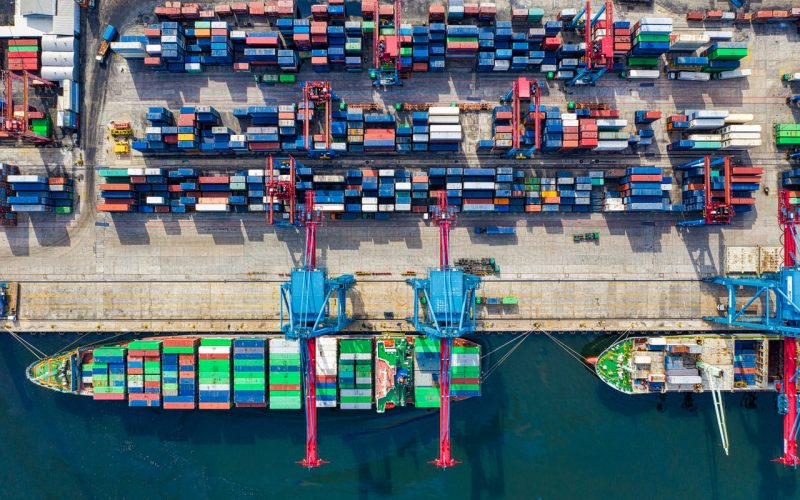Ready to learn about the biggest supply chain management trends for 2022? This is where you get all the answers you’ve come for, so feel free to dive in.
Almost any business out there relies on an operational and reliable supply chain. If this part of the process fails, the company can’t operate. However, if everything within the supply chain works as it should, it can thrive. But to meet the demands, the supply chain has to evolve.
We’ve all seen how significant the shifts in the industry were in 2020 and 2021 due to the COVID-19 pandemic. And as things stand right now, there will be massive shifts next year as well.
Before we start, we want to put a quick disclaimer out there. In this article, we won’t talk about things like automation, AI, blockchain, or the Internet of Things. Although these are excellent tools and developing rapidly, they’re still a long way from becoming a global standard. Instead, we want to focus on things that make a real difference in the world we live in.
So let’s take a look at what supply chain management teams need to know before 2022 starts.
Flexibility is the Biggest Trend of All
When you analyse your supply chain, you want to find it agile and flexible. It has to be able to withstand any trouble that may come its way, and that will indeed happen at some point. Some of
the most common problems that force businesses to pivot are raw material backlogs, labor shortages, and capacity limits.
If you get all three of these under control, you have nothing to worry about. And luckily, there are plenty of ways to make your supply chain more flexible.
● First off, you want to make sure you can pivot quickly. If you can resist an increase or decrease in production or set up new distribution channels with ease, you’re already in the clear.
● Second, you want to have plenty of options for sourcing products and transportation.
● And finally, you want to be able to plan for the demand and prepare for expected and unexpected scenarios.
Capacity and Cost Overthrow the Speed
Just a couple of years ago, the timeliness of delivery was everything that companies cared about. When picking their carriers, they focused only on who could get their shipment to them the most quickly. However, nowadays, carriers have more work than they do labor. Therefore, finding someone who can transport your shipment in the first place is a challenge.
Capacity issues are prominent in the container shipping industry. Managers struggle to get their shipments on the go, so they take whatever they can get. Still, some companies can guarantee you safe transportation, but you’ll have to dig deep and maybe even pull a few strings to get to them.
We expect that in 2022, more businesses will spread their shipments across different carriers. This way, they won’t have to rely on one company, and they’ll be able to keep their supply chain running.
Visibility Into Supply Chains is More Important Than Ever
When it comes to supply chains, visibility was always important. However, it seems that it will be one of the biggest supply chain management trends for 2022. According to Forbes, most supply chain managers say that they value visibility, but only a portion of them managed to achieve it altogether. Hence, it’s time for this to change.
If you go out of your way to do it, you’ll get lots of benefits in return. Of course, there’s the ability to spot trends or issues early, but there’s more to it than just that. The area where you’ll win the most is customer service.
Today, people want to have around-the-clock visibility. If you don’t offer things like shipment tracking to your retailers or end customers, you might lose many of them. You’ll agree that it’s much better to say to a customer ”Sorry, your parcel is delayed in Miami, and it will arrive in 3-4 days”, than ”Sorry, we don’t know where your parcel is or when it’ll arrive”.
On top of all that, high visibility will save you time and allow you to focus on other, more important things.
Increase in Pricing
From everything we talked about, anyone can conclude that the supply chain isn’t in a good place at the moment. Naturally, it’s affecting the bottom line, which is the price. The lack of workers, shortages of raw materials, and e-commerce driving the demand up are all the factors that made the transportation prices go up.
Next year, companies will do everything they can to source their materials closer to their manufacturing facilities. Sometime in the future, the supply chain leaders will have to find a way to bring their prices down or transfer the added cost to consumers.
Smaller Teams and Increased Wages
No matter where you look, you’ll see the ”Help Wanted” sign. Supply chains all over the world are struggling with the lack of a workforce. They battle it the only way they can — by offering higher wages and sign-on bonuses, and it still doesn’t draw enough people for them to be fully operational.
We can see carriers refusing to deliver to or take any shipments from certain terminals, cities, and zip codes because of this. Many industries are suffering, but offering workers more money is the best solution we’ve got so far. It works out great for the employees, but we have yet to see how this trend will affect the market in the long run.
Sustainability Remains Big
As consumer demands change, more and more companies are looking into developing a sustainability strategy for their supply chains. Reducing your carbon footprint has become a big thing, and it will only gain importance in the years to come. On the other hand, focusing on this side of things will bring additional benefits.
With the integration of new technology, you won’t have to use as many resources. Although there will be initial investments, your operation costs will decrease. You’ll lower your environmental impact and give your marketing team something to share with your audience. Hence, you won’t be at a loss.
We hope you liked our take on the biggest supply chain management trends for 2022. Do you agree or disagree with them? Let us know in the comments.













